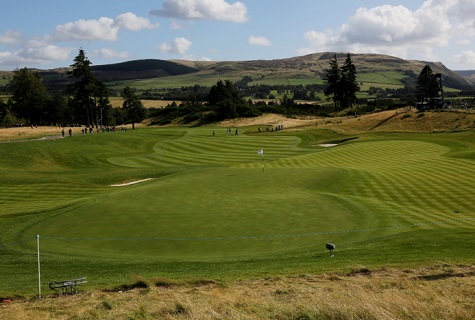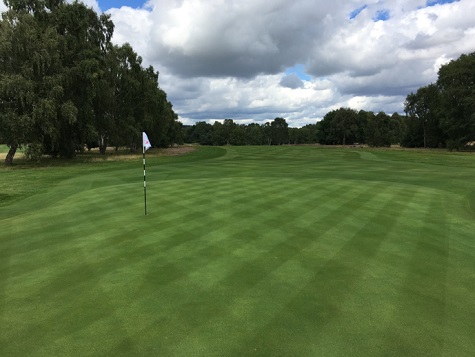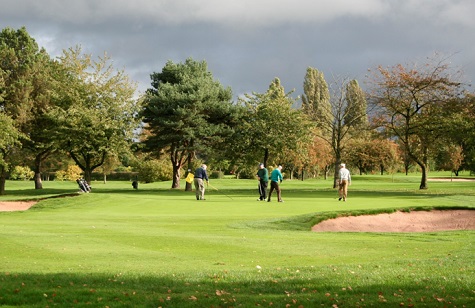Greenkeepers should now be extremely busy getting their golf courses up to speed and ready for the start of the relentless golfing competitions that usually begin in April.
Depending on the weather and what part of the country you are in, spring renovations of greens, tees and fairways should be underway.
The intensity of renovations will be governed by the condition of the playing surfaces and how well they have come through the winter period. In the main, most courses will be looking to aerate their greens and get some new topdressing materials back into the surface to restore levels and maintain surface porosity.

Choice of aeration varies between solid tine and hollow tine spiking depending on your goals, with the aim of getting some air back into the soil profile. This will be followed by topdressing with a compatible rootzone material.
Do not over do the topdressing rates. You do not want to smother your sward. The amount of topdressing will vary dependant on your needs. However, in the spring you would be looking to spread between half to one and and a half tonnes of material per green (2 to 3mm of material per m2). Many greenkeepers are now topdressing on a monthly basis, with a little and often approach.
Once the greens have been aerated you can then spend time on aerating other areas of the course, tees, fairways and approaches - all these areas will benefit from some solid tine spiking.

Feeding programmes should be determined by soil analysis. Obtaining nutrient levels for greens, tees and fairways will provide essential information that can be used to help choose the appropriate fertiliser product for your given turf surface. There are a wide range of fertiliser products now available and tailored to stimulate healthy grass growth.
It is important that your mowing machines are serviced regularly and are set up accurately, ensuring that both the height of cut and blade sharpness are correct. Damaged blades affect sward quality.
Irrigation systems should have been tested and calibrated by now. There is a need to ensure that all sprinkler heads are working and delivering the appropriate level of water to the turf.
April sees the mowing operations in full swing, with mowing frequencies varying from daily to weekly operations dependant on the growth of the grass and the standards set by the course managers. Mowing heights may vary depending on local conditions, type of course, course expectations, sward type and mower type. The mowing heights are a guide, and will be subject to local weather conditions, but remember not to remove more than 1/3 of total grass height in each cut. The less stress that is placed on the grass at this vital time the better the results further on into the season.
- Greens. Mowing height should be maintained at around 4-6mm.
- Tees. Mowing height should be maintained at around 10-15mm.
- Fairways. Mowing height should be maintained at around 15-20mm.
- Rough & semi rough grass areas. Mow and tidy up these areas.

Changing of holes should be carried out regularly, however frequency will be dependent on a number of factors - green size, greens construction, tournaments, amount of play and condition of the green. During wet periods it is likely the hole will wear more quickly, resulting in a crowning affect and surface wear. This wear is more apparent if the green has thatch problems. The hole will tend to wear quickly and form a depression, caused by the placement of the golfers’ feet. You may be looking to change the hole positions more than three time per week during wet periods. Most golf courses are changing their hole positions at least three times a week.
Most greenstaff will be applying a spring/summer N P K fertiliser, perhaps something like a 12/0/9 or 9/7/7 will effectively get the grass moving during April, then towards the end of April/early May applying a slow-release fertiliser to see you through June/July. However, the choice of material and how well it works can depend on many factors - soil type, weather, with moisture and air temperature being the catalyst for growth.

All of the above work is essential to help the golf course recover from the effects of the winter weather. Once soil and air temperatures rise into double figures, we then start to see grass surfaces recovering. We may also need to be mindful that the rise in temperatures may also bring on some disease outbreaks which will need some attention.
All the above work is a fraction of the work carried out by these amazing teams of greenkeepers. I do personally find it disturbing that there are still a few golf clubs who treat their staff poorly in terms of working conditions, pay and the fact that they are constantly under pressure from the greens committees to perform, when in most cases the number of staff employed by the golf club is not anywhere near enough to deliver their expectations. Running an 18 hole golf club with five or less staff is always going to be a tough call, the sheer amount of work required all year round is staggering, especially when they expect their course to look and perform like championship surfaces.
I firmly believe at least a team of seven is required to ensure you can meet the expectations of today’s club golfer. In recent years we have seen several head greenkeepers leaving the industry, mostly down to the pressures this job brings. It is now time golf clubs respected and treated their greenkeepers in a more respectful way and more importantly supported them in acquiring the resources, machinery and materials to deliver the product golf course members now expect.